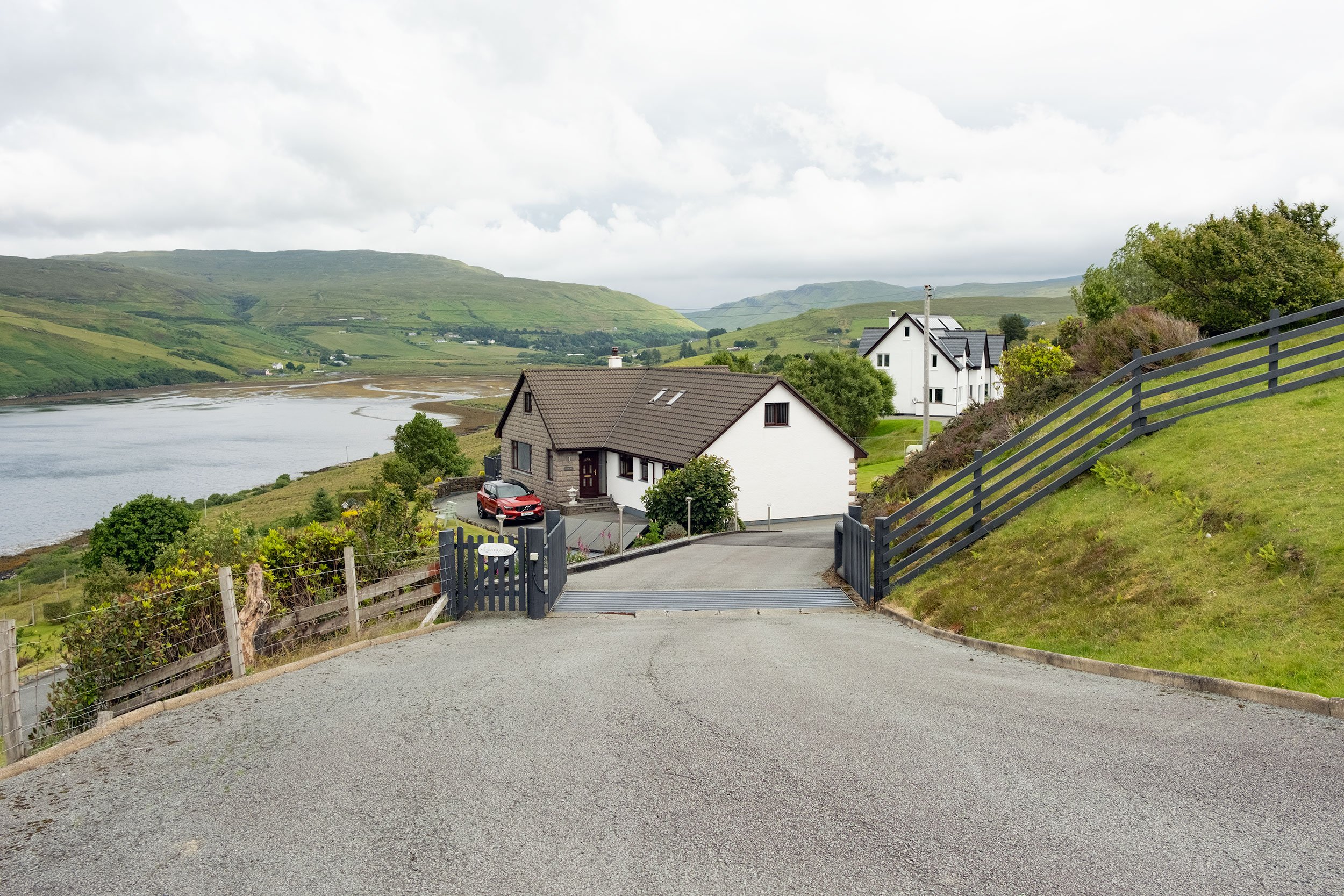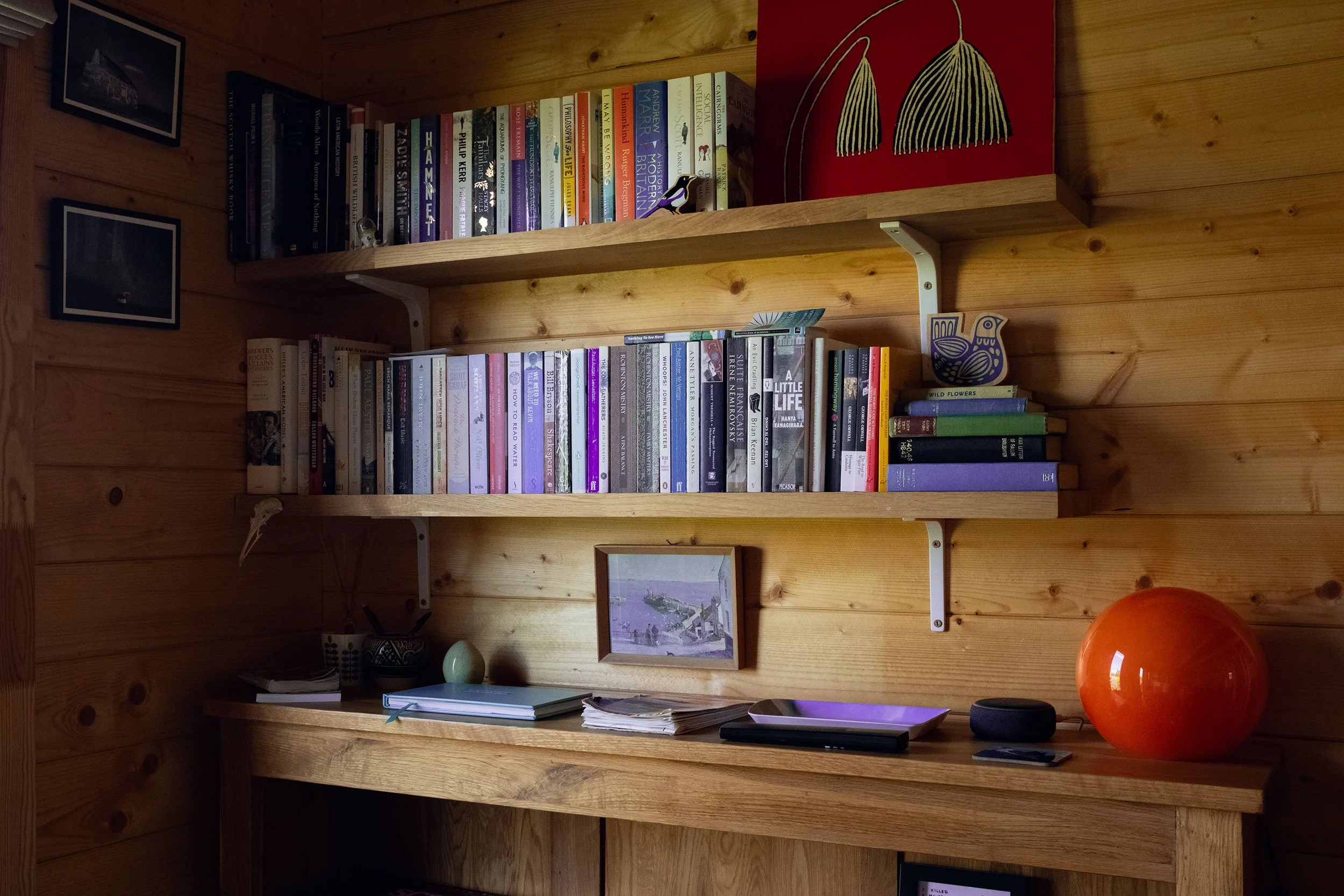How I Photographed Scotland
Isle of Skye
I’ve been back from Scotland for a few weeks now, and I wanted to take this opportunity to summarize how I photographed the country, including which gear I used most and what film simulation I used. I also want to examine how many final images came from the RAW files and how many were JPEGs.
Gear and Settings
I was heavily debating bringing the Canon 5D Mark II with the 24-105mm and the 70-200mm as I knew I would be taking photos of vast areas and would like to zoom in on details and isolate my framing. Looking back, I may have missed some opportunities based on my limited range. However, I also believe I would have mistakenly shot too tight on others, changing the impact of a few photos.
With my Fujifilm X-H2, I had the 23mm f/2 and the 35mm f/2. This duo has zero telephoto capabilities, but having limited options can improve your photos as you learn to work around your limited choices. The total split of lens usage was approximately 80% 23mm and 20% 35mm.
I shot at an aperture of f/7.1 and f/8 the entire time to ensure enough focus front to back and to nail focus during the urgency of street photography. However, I still botched some photos in Edinburgh due to missed focus. I set the ISO to auto and the minimum shutter speed to 1/160, which, in hindsight, I should have bumped up to around 1/500. That probably would have assisted in the success rate of street photos in Edinburgh.
RAW vs JPEG - The Numbers
I took approximately 662 unique photos, which I have remaining after deleting about 50 images that were either out-of-focus and unusable or mistakes. Since I captured RAW + JPEG, that number doubles to 1,324. Considering those estimates, pushing the trigger about 750 times is not that many and is below average for what I would usually take for a trip of that duration. I’ll contribute that to the travel within Scotland as I was driving often and during that time was not able to take photos.
296 photos were taken during our trip’s last two days in Edinburgh; 45% of my photos were taken in one city. Moving forward, a few more images will probably be permanently deleted. I was experimenting, and some pictures are ok at best and will never be processed.
At this point, I’ve reviewed the archive of photos and selected and processed what I found to be the best photos from those 662. So, how many final images were from the RAW image, and how many were from the JPEG file? I have 28 final photos; 23 were processed from RAW files, and only five were from JPEGs. For the entire duration of Scotland, I used one film simulation, Kodachrome, as it has become one of my favourite film simulations for street photography. Indeed, this was the case here. Of the five JPEG images, four are from Edinburgh, where the focus was primarily on street photography. The others were from around Scotland, exploring the country’s landscapes, colours, and beauty. The aspects of Kodachrome that I like best, including the colour treatment and the grain effect (although I do have it reduced in my recipe), were not necessarily bad; however, I felt that processing the photos from the RAW resulted in images I enjoyed more. So, in summary, Kodachrome worked well for street photography but not as well for travel photography.
If you plan to use any film recipe or simulation, this is an excellent example of why you should always take RAW + JPEG. Having duplicate files allows you to compare and decide where to go with your images. Chances are that if I had only the JPEG, I’d probably like them just fine, but having it beside a RAW copy shows the impact of the settings of the recipe, and it’s easier to see if some of those settings don’t work. There is no reason to take only JPEG unless you despise the act of post-processing entirely. I enjoy sitting down, analyzing and studying a photo, and processing it to the final image.
Our Airbnb - Glenogil, Scotland
Conclusion
In summary, with the added range, I could have captured different photos and additional “keepers.” However, I could have missed out on a wider composition by having that option. Also, I would have had to have been switching camera bodies. Would the time it takes to do so contribute to missed opportunities? I’ll never know. Photography success is about capturing the photo, and the more options and considerations are involved, the more it can influence what is achieved.
I’ll probably continue to take RAW + JPEG on my travels and everyday use, as sometimes I lean more towards the JPEG produced, whereas other times, the flexibility of the tried and true RAW image has the advantage.

